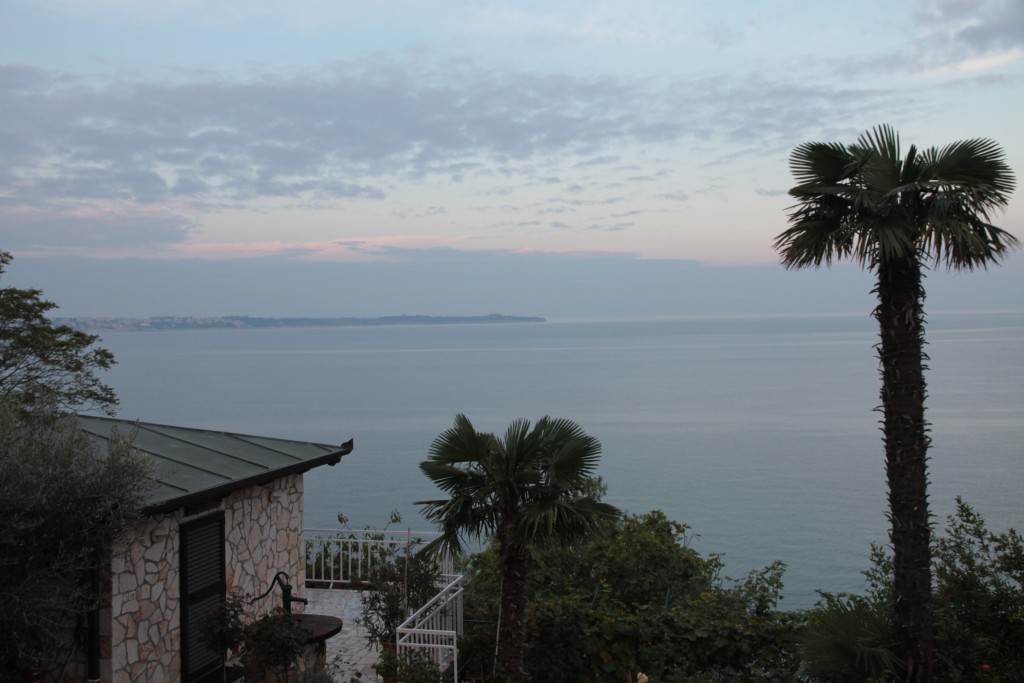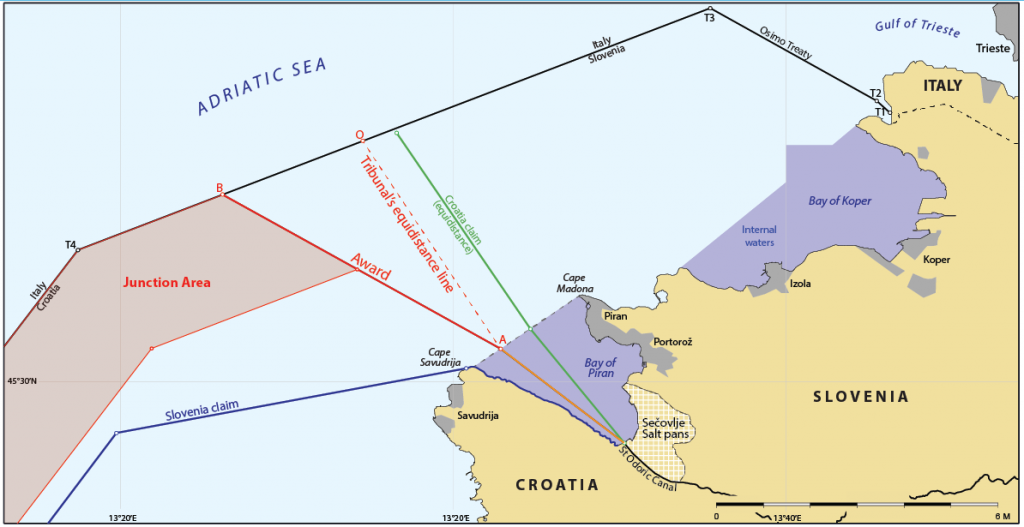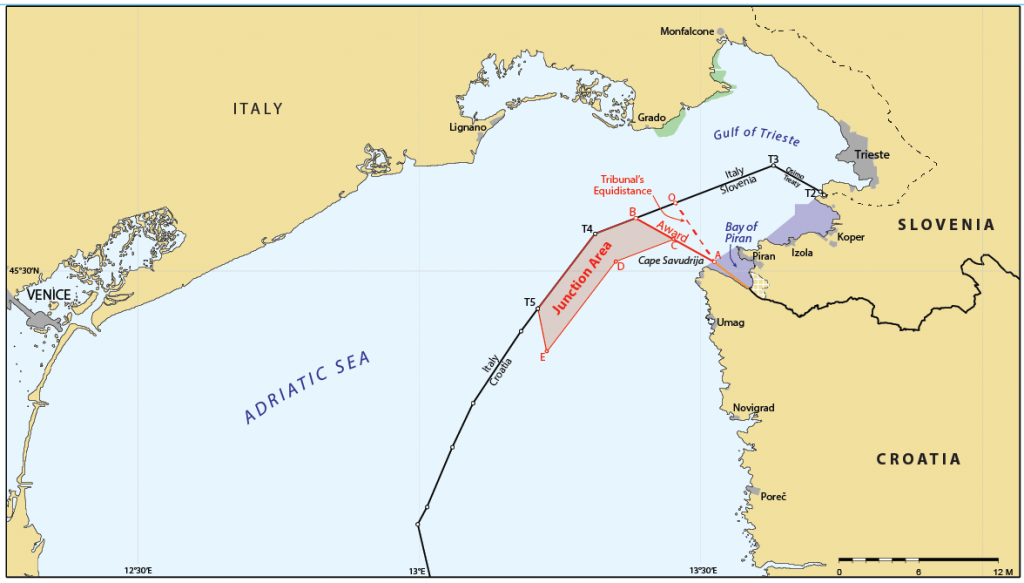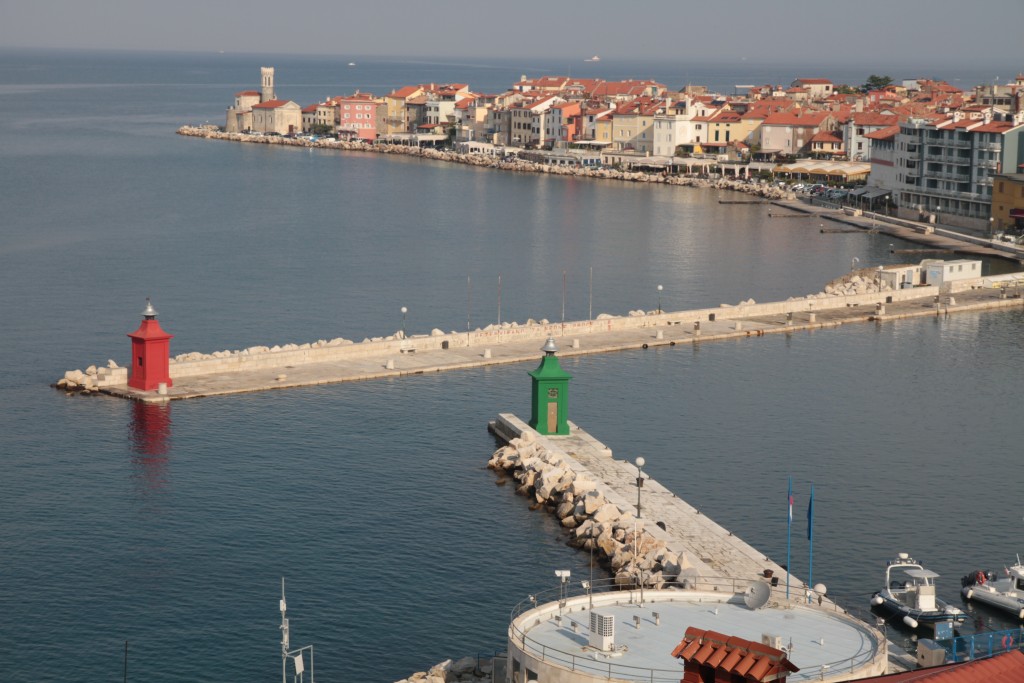
Looking across the Bay of Piran from Slovenia to Croatia
The arbitral tribunal in the long-running but ill-fated Slovenia-Croatia boundary dispute finally delivered its judgment in June 2017.
The dispute concerns the whole length of the land boundary, the Bay of Piran and the maritime boundary. The case was lodged by mutual consent in November 2009. After two rounds of simultaneous written pleadings, the oral hearings took place in The Hague in April-May 2014.
The judgment addressed the whole length of the land boundary where several, albeit small, stretches were in dispute. From the maritime boundary perspective the important findings were that the Bay of Piran could be considered historical internal waters (on the basis of its status during the Jugoslavian regime) and hence not subject to delimitation under the law of the sea. The bay was delimited by drawing a line giving Slovenia three-quarters of the closing line (Point A), also marking the start of the maritime boundary.
Regarding the maritime boundary, the tribunal was tasked with (a) determining the course of the maritime and land boundary between the Republic of Slovenia and the Republic of Croatia; (b) Slovenia’s junction to the High Sea; and (c) the regime for the use of the relevant maritime areas. Starting at Point A on the Bay of Piran closing line, the Tribunal first drew an ‘equidistance’ line extending northwards to the boundary with Italy (Point O). On the basis that the narrow northwards projection of the Croatian coast at Cape Savudrija produces an inequitable ‘boxing-in’ of Slovenia’s maritime zone, the line was adjusted westwards to Point B, approximately parallel to the T2-3 section of the Italy-Slovenia boundary (Osimo Treaty).

The award in Croatia/Slovenia
The issue of Slovenia’s ‘junction’ to the High Sea caused much linguistic analysis as the Parties had very different views as to what this meant. The conclusion of the Tribunal was that ‘High Sea’ must refer to the area outside the territorial sea, as neither Croatia not Slovenia has established an EEZ. Slovenia had been looking to achieve a boundary between its territorial sea and the ‘High Sea’ to avoid any transit through the Croatian territorial sea. The Tribunal resolved this by creating within the Croatian territorial sea a Junction Area 2.5M wide to the south of the Croatia/Italy boundary. Within this zone there would be freedom of communication for the purposes of uninterruptible access to Slovenia for ships and aircraft, equivalent to straits passage. These freedoms are not conditioned on any presumption of innocence and are not suspendable under any circumstances.

Croatia/Slovenia award: the Junction Area
While the award is binding and a definitive settlement of the dispute according to the Arbitration Agreement, Croatia has refused to recognise the decision and have questioned the validity of the whole process because of issues with the Slovenian arbitrator who had to step down after his neutrality was questioned.
see http://www.pca-cpa.org/showpage9e4c.html?pag_id=1443

The Slovenian Venetian-style town of Piran facing Croatia across the bay.